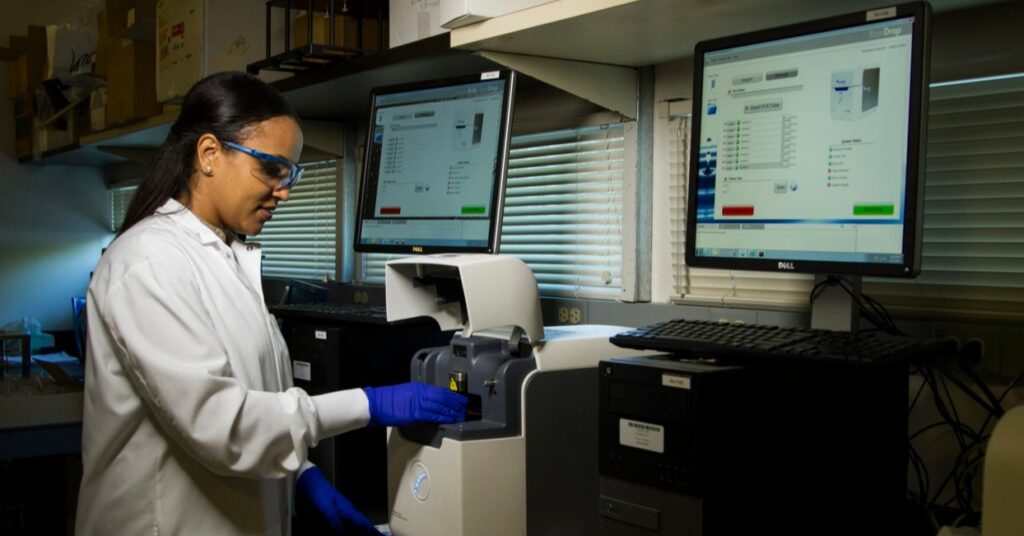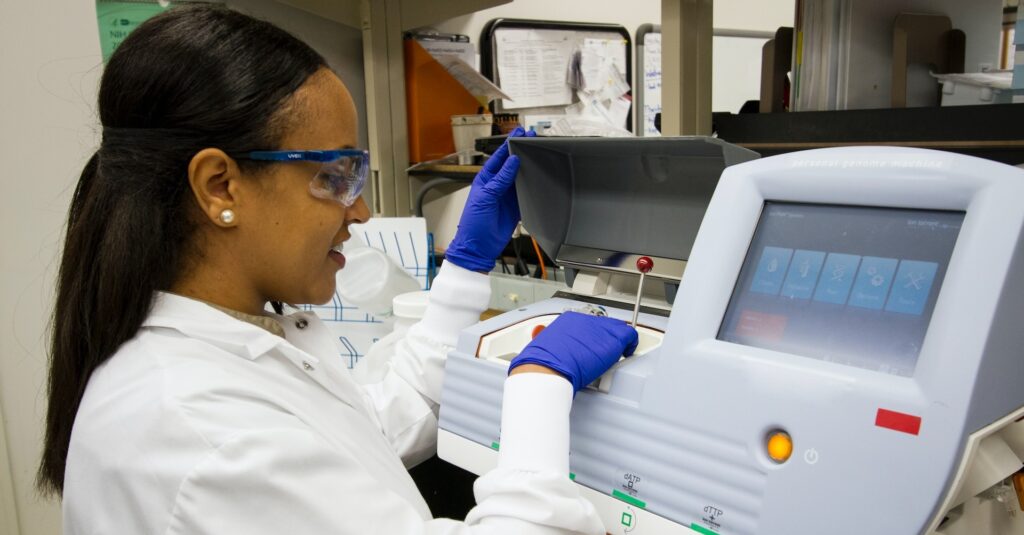
What Is the Epidemiological Triangle?
The epidemiological triad or triangle is an organized methodology used [...]

A 2018 New York Times article surveyed a dozen male nurses who had switched careers to nursing. Among the questions the Times explored: what had motivated these men to abandon their former jobs and switch to healthcare.
“The pay is great, the opportunities are endless and you end up going home every day knowing that you did something very positive for someone else,” one business owner turned oncology nurse told the paper. Another respondent, a former handyman, focused on job security, asserting: “It’s a good profession because it’ll always be there. They’ll always need nurses. It can’t be outsourced, it can’t be automated.”
Nursing offers its practitioners its own version of the three Rs: it’s reliable, remunerative, and rewarding. That’s what draws nearly 4 million healthcare professionals to registered nursing (making it the single largest healthcare profession in the United States). And it’s not just a career for freshly minted BSNs. A surprising number of people are choosing nursing as a second career. Are you among them?
In this article on switching careers to nursing. we’ll discuss all aspects of the transition, including:
Nursing is not a one-size-fits-all profession. In fact, one of the field’s strongest appeals is its surprisingly broad range of positions, responsibilities, and compensation. Whether you’ve already decided to make the switch to nursing or are just exploring the idea as a new career, it’s helpful to understand your options and determine which ones best suit your personality and skills set, career and financial objectives, and timeframe. These factors ultimately determine whether you’ll need to pursue an advanced degree, such as a Master of Science in Nursing (MSN).
For many, becoming a licensed practical nurse (LPN) provides an entryway to nursing and other nursing careers.
The path to obtaining certification as an LPN is relatively quick and inexpensive; it requires that you have a high school diploma or equivalent and successfully complete a state-accredited LPN program that concludes with an award of either a certificate or (non-degree) diploma. These educational programs—comprising both classwork and clinical components—are available primarily through technical schools and community colleges.
The required coursework introduces you to such topics as biology, chemistry, anatomy, and child development, among others. LPN programs typically take one to two years to complete depending on the time commitment of each student. If your career transition enables you to attend school full-time, however, you should be able to finish the program in just one year.
With that under your belt, you’ll need only to take and pass the NCLEX-PN licensure exam administered by the National Council of State Boards of Nursing (NCSBN). Not a great test-taker? Don’t fret too much. In 2020, the passing rate for all first-time, US-educated LPN candidates was over 83 percent. You may take the test up to eight times per year, if necessary.
Once you’re a licensed practical nurse, where will you work, and what will you do? Practical nurses work in various settings, including physician offices, hospitals, and long-term care facilities. According to the Bureau of Labor Statistics (BLS), the largest proportion of the nation’s PNs—38 percent—work at nursing and residential care facilities. Working under the supervision of a registered nurse or physician, practical nurses perform patient-centric tasks such as dressing wounds, drawing blood for lab work, and monitoring patients’ vitals.
Registered nurses (RNs) form the backbone of the nation’s nursing community. BLS statistics for 2019 show that there were well over three million RNs nationally (compared to around 700,000 LPNs). More significant for the purposes of this article, the demand for RNs is forecast to increase by more than 215,000 through 2029.
As with LPNs, registered nurses perform patient-centered work. The RN’s day-to-day activities, however, entail significantly more responsibility, independence, and communication with physicians and other healthcare providers. The largest proportion of registered nurses—more than 60 percent—work in hospitals. Another nearly 20 percent are found in various ambulatory health services that include doctors’ offices and outpatient care centers.
No matter the setting, RNs generally serve as the point-person for care delivery, monitoring and assessing patient health while consulting and coordinating with doctors to implement care plans.
The opportunities to specialize in a specific area of care, and even to travel and work across the country and around the world, represent additional benefits of an RN career. Just a few of the many specialty health categories open to RNs include:
The flexibility to “customize” your work in this manner can be particularly appealing to those considering nursing as a second career.
Three academic paths lead to becoming a registered nurse. You can earn:
Note that many states are moving toward requiring a bachelor’s degree to qualify for RN status and that nursing diploma programs grow increasingly rarer each year. The path that’s right for you will depend on:
According to DATA USA, BSN degrees account for 55 to 60 percent of all nursing degrees awarded annually, while associate degrees comprise 30 to 35 percent. If time and finances are of paramount concern, an associate’s degree in nursing (ADN) might be the right track for you. Earning an ADN generally requires two years and qualifies graduates for many entry-level nursing positions. Once established in the field, the degree can also be a stepping stone to obtaining a higher degree, often with the help of employee tuition reimbursement programs.
That said, obtaining a bachelor’s degree in nursing makes the most sense for most career-switchers for several reasons. First, BSN programs are widely perceived as providing the most comprehensive training to prospective RNs and open doors to the broadest universe of career tracks. And if you’re feeling ambitious, the BSN also helps enable a transition to more advanced nursing specializations that offer both greater responsibility and higher salaries.
Those without a college degree typically require four years to obtain a BSN. If you’re contemplating a career move with an undergraduate degree already under your belt, however, you can compress that time frame considerably through an accelerated BSN program. Taking advantage of previous learning experiences, these fast-track programs are widely available and gaining in popularity. According to the American Association of College of Nursing, 282 accelerated baccalaureate programs in the US offer degrees that can be completed in eleven and eighteen months.
After completing either degree option, you’ll need to take the NCSBN RN licensing exam. Statistics provided by the NCSBN for exams taken in 2020 show a passing rate of nearly 87 percent for all degree holders, and over ninety percent for those with a BSN.
If you’re looking for a career change, there’s a good chance you’re aiming for work that’s not only more rewarding but that entails significant responsibility and/or higher pay. If that’s the case, becoming an advanced practice registered nurse (APRN) might be the best route for you.
Situated atop the nursing hierarchy, APRNs are entrusted to provide many of the same services offered by physicians. These include diagnosing and treating patients, performing some medical procedures, prescribing medications, and referring patients to specialists. The scope of their work varies by state, with many allowing APRNs to own and operate their own medical practices. Others work in various healthcare settings that include doctors’ offices, hospitals, outpatient clinics, community care centers, and birthing facilities.
The four types of advanced practice specialties are:
No matter the role, attaining APRN status usually requires both significant work experience and an advanced degree. The qualifying credential earned by the vast majority of APRNs is a Master of Science in Nursing (MSN), while a smaller portion obtain a doctoral-level degree, usually a Doctor of Nursing Practice (DNP).
To enroll in an MSN program, most schools require that applicants have a BSN as well as an active RN license. Depending on the nursing school and your intended specialty area, a minimum of one year’s work experience may also be required. Students who hold a BSN and attend school full-time can expect to complete the MSN in about two years.
In addition to pursuing their studies in a chosen specialty area and clinical work, all prospective APRNs must receive training in:
Finally, they must take and pass the APRN licensing exam.
With an MSN in hand, the world becomes your healthcare oyster. It qualifies you for a host of positions with significant autonomy and responsibility, great impact on your community, and exceptionally strong compensation. A trifecta.
The confluence of a rapidly aging population and an overwhelmed physician workforce has created immense demand for additional, high-level care providers in the US. This need is being met, in considerable measure, by nurse practitioners (NPs).
Among the nation’s APRN nurses, the largest bloc serve as NPs. According to the American Association of Nurse Practitioners (AANP), there were more than 290,000 licensed NPs in the US in 2020. What’s more, as an indication of the profession’s demand trajectory, more than 30,000 NPs completed their academic programs in the 2018-2019 period. This upswing is forecast to continue well into the future.
AANP statistics show that:
In terms of their medical focus, the largest proportion of NPs—more than 65 percent—hold certification in family medicine. Other top focus areas include:
Clinical nurse specialists (CNS), like nurse practitioners, have seen their ranks and responsibilities grow in response to the nation’s primary-care professional shortage. While CNSs have been around a lot longer than the relatively new nurse practitioner field, they share many of the same responsibilities and authority. The most significant distinction is that most NPs work autonomously in one-on-one settings with their patients, while the day-to-day activities of a CNS are more team-oriented, often focusing on leadership or teaching roles.
While many NPs work in private practice, CNSs often work in schools and in community and mental health clinics. Key findings in a survey by the National Association of Clinical Nurse Specialists found that precepting students occupied the most time on NPs’ calendars. Other high-ranking activities included assisting in evidence-based projects (EBPs) and assisting other nurses and staff with direct patient care. If consulting, advising, and teaching are activities that appeal to you, then working as a CNS could be up your alley.
Did you know that anesthesiology in the United States began—and for many decades remained—a field exclusively for nurses? Today, as with nurse practitioners, certified registered nurse anesthetists (CRNAs) engage in nearly identical activities as their physician counterparts. Their ability to provide services independent of any oversight—and the degree of oversight—varies by state. Currently, they operate independently in seventeen states, including California.
CRNAs work in hospital operating and emergency rooms, as well as in outpatient surgical centers, delivery rooms, and many specialist practices, such as ophthalmologist and plastic surgery offices. Interestingly, according to the American Association of Nurse Anesthetists (AANA), “CRNAs typically are the sole anesthesia professionals caring for US service men and women.”
CRNAs review patient medical histories to determine the appropriate anesthesia, administer anesthesia, and closely monitor patients’ vital signs during procedures to make any necessary adjustments. Following procedures, CRNAs also oversee patients during recovery to ensure that any side effects from the process are adequately addressed.
It’s worth noting that the accrediting body that oversees all nurse anesthesia programs—the Council on Accreditation (COA)— has for many years publicized their intention to upgrade the academic requirements to become a nurse anesthesiologist. In January 2021, this plan was formally approved, requiring a doctoral-level degree for all prospective CRNAs beginning in 2025. Consequently, barring any further delays in implementing this policy, students who have not attained CRNA status by 2025 will probably have to complete a degree program for either a DNAP (Doctorate of Nursing Anesthesia Practice) or a DNP (Doctorate of Nursing Practice).
Many schools, like Northeastern University, are in the process of transitioning their programs accordingly and are now approved by the COA.
If you’re looking for a good-paying job in delivery, skip Amazon and consider a career as a certified nurse midwife (CNM). Like nurse practitioners, CNMs deliver comprehensive, primary care services to patients, but with a primary focus on women and their babies’ needs in the periods before, during, and after childbirth.
In half of the 50 states, including New York, CNMs are empowered to deliver their services and prescribe medicines independently. The remaining states either require CNMs to operate under a collaborative written agreement with a physician or don’t allow them independent prescriptive authority. A closely related professional track available to RNs is labor and delivery nurse.
According to the American College of Nurse-Midwives (ACNM), activities performed by CNMs include:
The breadth and depth of CNMs responsibilities are further noted by the ACNM, explaining that it can include “health promotion, disease prevention, and individualized wellness education and counseling.”
The most common path to becoming a CMN entails:
Informed by their clinical experience, nurse informaticists collect a broad spectrum of data to improve the quality, accessibility, and efficiency of healthcare systems. The past decade has witnessed explosive growth in the use of electronic communication and data employed by the healthcare industry. Consider, for example, the number of physicians and nurses constantly entering vital health information into their electronic devices, or how many Americans rely on patient portals today to access their personal records and communicate with providers. To support this quickly emerging field, many schools—the University of Michigan is one—have developed master’s programs specifically geared to nursing informatics.
Nurse informatics is an especially apt field for career switchers coming over from data science, analytics, or computer science professions.
First and foremost, people enter nursing because they want to help others. Compensation is also important, of course; it’s hard to do your best work if you’re struggling to make ends meet or feel underappreciated.
Nursing salaries vary enormously, as in most fields, by level of education and experience. For example, according to the most recent BLN statistics, the median annual salary for licensed practical nurses was just under $49,000, with the top ten percent of LPNs earning more than $65,000. Long-term care facilities and government agencies were cited as the best-paying employers, while hospitals and physician offices ranked at the bottom.
Among registered nurses, who earn considerably more than their LPN counterparts, the pay scale was considerably broader. With a median income of more than $75,000, LPN’s top earners make more than $116,000. For RNs, the highest pay came from work in government and hospitals, while nursing and residential care facilities ranked at the bottom.
The industry’s best-compensated practitioners are advanced practice registered nurses. For the year 2020, median incomes for APRNs topped out at more than $183,000 for nurse anesthetists, while both nurse practitioners and nurse midwives earned more than $111,000. Among employers, hospitals and outpatient care facilities ranked as the top payers with median salaries of more than $124,000 and $122,000, respectively.
Keep in mind that the considerable national demand for nurses (at all levels) and their projected increase in salaries means that these figures are probably lower than what is currently offered and certainly less than you can expect if your second career comes to fruition. Even prior to the pandemic, substantial signing bonuses and other financial incentives were commonplace among employers seeking to hire nurses.
The COVID-19 pandemic has emblazoned the concept of “frontline” and “essential” workers into the American psyche. Situated at the front of the frontline and as essential as they come, nurses and nursing have clearly emerged with the gratitude and respect that our caregivers deserve. Anyone exploring a career move would be hard-pressed to find many other vocations trending more strongly and more positively in terms of high demand, recognition, and—in many cases—compensation.
(Last Updated on February 26, 2024)
Questions or feedback? Email editor@noodle.com

The epidemiological triad or triangle is an organized methodology used [...]

A family nurse practitioner (FNP) provides comprehensive primary health care [...]

FNPs practice in a broad range of health care settings. [...]

Some epidemiologists assist pharmaceutical companies in developing safer medicines. Some [...]

A Bachelor of Science in Nursing (BSN) is a four-year [...]
Categorized as: Nurse Practitioner, Nursing & Healthcare